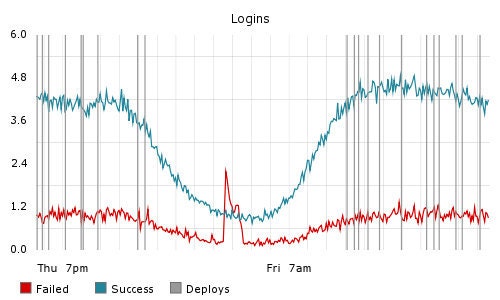- Published on
System Design: Software Metrics
- Authors
- Name
- Full Stack Engineer
- @fse_pro
  |   |
|---|
Table of Contents
- Introduction
- 1. What are Software Metrics?
- 2. The Role of Software Metrics in System Design
- 3. Key Categories of Software Metrics
- 4. Importance of Software Metrics
- 5. Commonly Used Software Metrics
- 6. Best Practices for Monitoring Software Metrics
- 7. Scaling and Interpreting Software Metrics
- 8. Challenges in Software Metrics Collection
- 9. Conclusion
- 10. Additional Resources
Introduction
Software metrics are essential tools for evaluating the performance, scalability, and maintainability of a system. They provide valuable insights into the system's behavior, helping developers and operations teams make informed decisions and improve the overall quality of the software. This comprehensive guide explores the role of software metrics in system design, the different categories of metrics, their importance, commonly used metrics, and best practices for effective monitoring.
1. What are Software Metrics?

Software metrics are quantitative measurements that assess various attributes of a software system. These measurements are collected during the development, testing, and production phases to evaluate the system's performance, resource utilization, and overall health.
2. The Role of Software Metrics in System Design
Software metrics play a crucial role in system design for several reasons:
Performance Optimization: Metrics help identify performance bottlenecks and areas for optimization.
Scalability Assessment: Metrics provide insights into the system's ability to handle increasing loads.
Maintenance and Debugging: Metrics aid in identifying bugs and potential maintenance issues.
3. Key Categories of Software Metrics
Software metrics can be broadly categorized into three main types:
3.1. Performance Metrics
Performance metrics focus on evaluating the system's response time, throughput, and resource utilization under varying workloads.
3.2. Scalability Metrics
Scalability metrics assess the system's ability to handle increasing loads and maintain performance as the user base grows.
3.3. Maintainability Metrics
Maintainability metrics measure the ease of maintaining and evolving the software codebase over time.
4. Importance of Software Metrics
Software metrics are of paramount importance in system design and development for the following reasons:
Quantitative Assessment: Metrics provide objective, quantitative data for evaluating system performance and health.
Decision Making: Metrics aid in making informed decisions about system improvements and optimizations.
Continuous Improvement: Monitoring metrics over time helps in identifying trends and patterns for continuous improvement.
5. Commonly Used Software Metrics
Several software metrics are commonly used to assess different aspects of system performance and health:
5.1. Response Time
Response time measures the time taken by the system to respond to user requests.
5.2. Throughput
Throughput quantifies the number of requests the system can handle within a given time frame.
5.3. Error Rate
The error rate indicates the percentage of failed requests or errors in the system.
5.4. CPU and Memory Usage
CPU and memory usage metrics assess the system's resource utilization.
5.5. Latency
Latency measures the time taken for data to travel from the source to the destination.
5.6. Code Complexity
Code complexity metrics evaluate the complexity of the software codebase, aiding in maintenance and refactoring efforts.
6. Best Practices for Monitoring Software Metrics
Implementing effective software metric monitoring requires following best practices:
6.1. Define Relevant Metrics
Identify and define metrics that align with your system's goals and performance requirements.
6.2. Set Baselines and Thresholds
Establish baseline values and thresholds for each metric to determine acceptable performance ranges.
6.3. Implement Real-time Monitoring
Implement real-time monitoring to quickly detect and respond to performance issues.
6.4. Utilize Alerts and Notifications
Set up alerts and notifications to notify the appropriate teams when metrics exceed defined thresholds.
7. Scaling and Interpreting Software Metrics
Scaling and interpreting software metrics involve:
7.1. Handling High Traffic
Plan for handling high traffic loads by optimizing performance and resource allocation.
7.2. Analyzing Trend Data
Analyze trend data to identify long-term patterns and potential issues.
7.3. Identifying Bottlenecks
Use metrics to pinpoint bottlenecks and focus on targeted improvements.
8. Challenges in Software Metrics Collection
Software metric collection may face challenges such as data accuracy, resource overhead, and metric relevancy.
9. Conclusion
Software metrics are indispensable tools in system design and development. By effectively measuring and monitoring various aspects of a system's performance, scalability, and maintainability, software metrics facilitate continuous improvement and reliable decision-making.
10. Additional Resources
To delve deeper into software metrics and their role in system design, here are some additional resources:
Google SRE Book: Monitoring Distributed Systems - A chapter from the Google Site Reliability Engineering book that covers monitoring practices for distributed systems.
Prometheus: An Open-source Monitoring System - An open-source monitoring system and time-series database widely used for collecting and querying software metrics.
Datadog APM and Metrics - A cloud-based monitoring and analytics platform that offers application performance monitoring (APM) and customizable metrics.
Etsy: Measure Anything, Measure Everything - A blog post from Etsy describing their approach to measuring and monitoring various aspects of their systems.